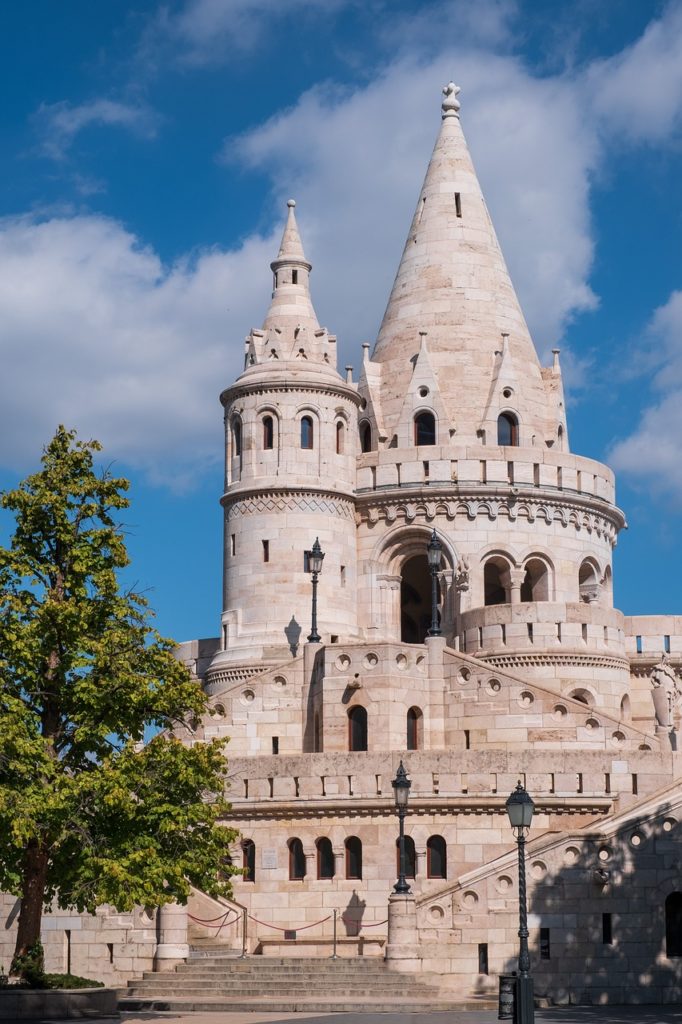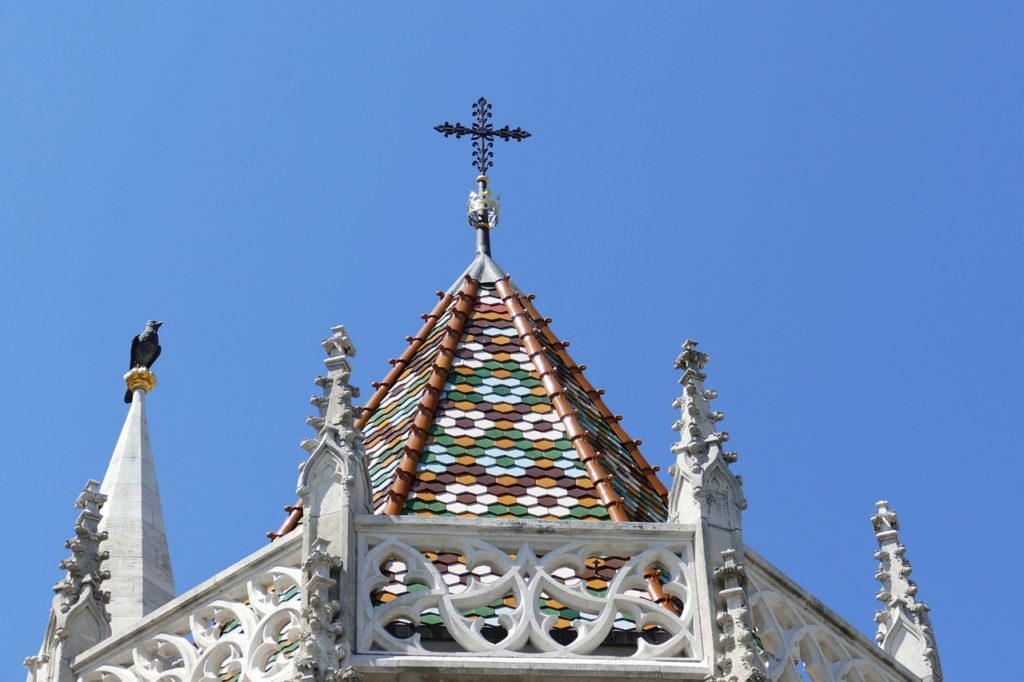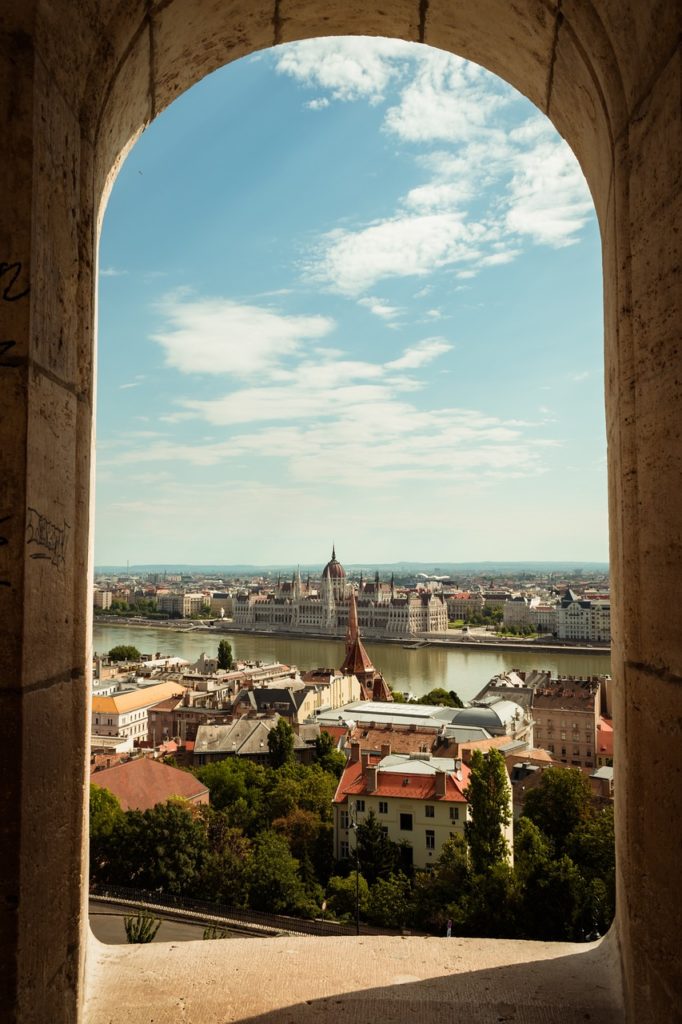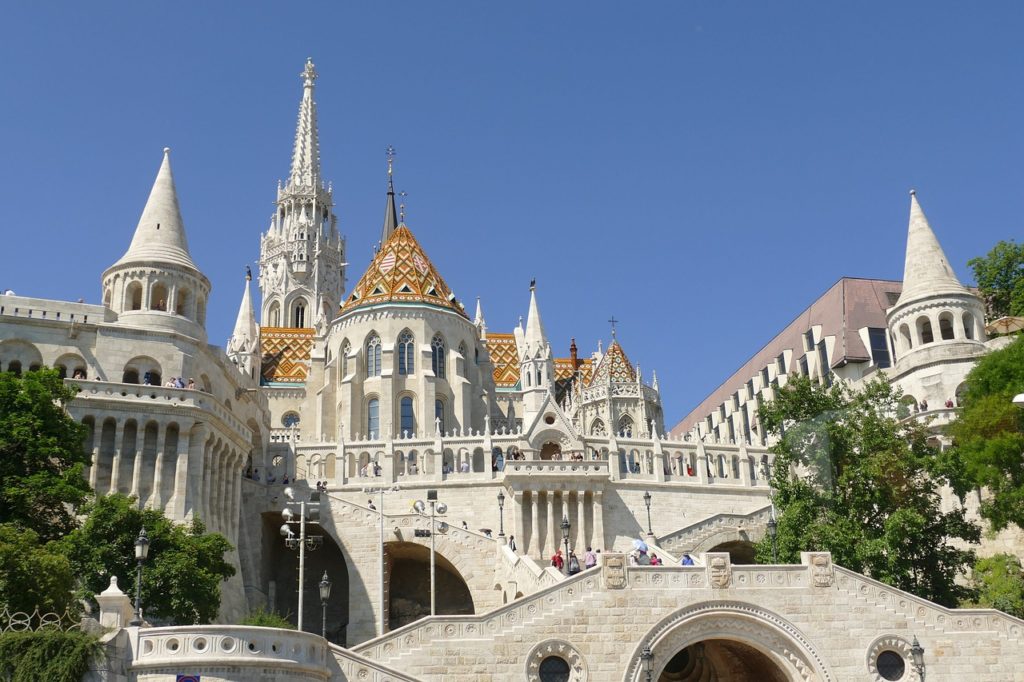Nestled atop the hills of Buda, overlooking the majestic Danube River, stands a monument that embodies the rich history and architectural splendor of Budapest: Fisherman’s Bastion. This iconic structure, with its graceful towers and panoramic terraces, serves as a testament to the city’s storied past and enduring legacy. Join us on a captivating journey as we delve deep into the history, symbolism, and allure of Fisherman’s Bastion, a true jewel in Budapest’s crown.

The story of Fisherman’s Bastion dates back to the late 19th century when it was commissioned to honor the fishermen who once defended this portion of Budapest’s city walls. Legend has it that during the Middle Ages, a guild of fishermen known as the “halászok” patrolled this strategic stretch of the fortifications, safeguarding the city from would-be invaders. In recognition of their bravery and service, Fisherman’s Bastion was erected as a lasting tribute to their valiant efforts.
Designed by architect Frigyes Schulek in the late 19th century, Fisherman’s Bastion blends elements of neo-Romanesque and neo-Gothic architecture, creating a visually stunning
masterpiece that seamlessly integrates with its historic surroundings. The bastion’s seven
towers, representing the seven Magyar tribes that settled in the Carpathian Basin, serve as a powerful symbol of Hungary’s national identity and unity. Each tower, with its intricate stonework
and soaring spires, stands as a testament to the country’s medieval heritage and enduring spirit.
The construction of Fisherman’s Bastion coincided with Budapest’s millennial celebrations in 1896, marking a significant milestone in the city’s history. As Hungary commemorated one thousand years of statehood, Fisherman’s Bastion emerged as a symbol of renewal and rebirth, signaling a new era of prosperity and cultural revival. Its completion represented a triumph of art
and architecture, showcasing Budapest’s commitment to embracing the ideals of the
Renaissance and ushering in a new age of enlightenment.

Fisherman’s Bastion is not merely a structure of stone and mortar; it is a repository of legends and folklore that have captured the imaginations of generations. According to local tales, the bastion was built by seven fisherman brothers, each tasked with guarding a section of the walls. Their unwavering dedication to duty and camaraderie in the face of adversity became the stuff of legend, inspiring countless tales of heroism and bravery. To this day, their legacy lives on, woven into the fabric of Budapest’s cultural heritage.
Throughout the centuries, Fisherman’s Bastion has stood as a symbol of resilience and continuity, bearing witness to the ebb and flow of history. Despite undergoing several renovations and restorations, the bastion remains a cherished landmark, beloved by locals and admired by visitors from around the world. Its towering spires and sweeping vistas serve as a reminder of Budapest’s enduring spirit and unwavering commitment to preserving its heritage for future generations.

Beyond its historical significance, Fisherman’s Bastion offers visitors a gateway to explore the enchanting neighborhood of Buda Castle. From the cobblestone streets lined with historic buildings to the quaint cafes and artisanal shops that dot the landscape, there is much to discover in this captivating corner of Budapest. As visitors wander through the winding alleys and hidden courtyards, they are transported back in time, immersed in the rich tapestry of Budapest’s cultural heritage.
Fisherman’s Bastion stands as a testament to Budapest’s rich history, architectural prowess, and enduring legacy. Its towering spires and panoramic vistas serve as a beacon of hope and inspiration, inviting visitors to embark on a journey through time and imagination. As Budapest continues to evolve and thrive, Fisherman’s Bastion remains a cherished symbol of the city’s past, present, and future—a timeless reminder of the indomitable spirit that defines Budapest
and its people.


Comments are closed.